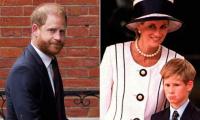Washington: US incomes dropped in May as stimulus measures to counter the coronavirus downturn expired, while spending recovered after two months of losses, according to government data released on Friday.
The $2.2 trillion CARES Act stimulus program passed in late March made one-time payments directly into the pockets of Americans and also expanded unemployment benefits for the tens of millions who lost their jobs as the downturn arrived.
Those funds boosted incomes in April by 10.8 percent but the effect wore off in May and income fell 4.2 percent, the latest Commerce Department data showed, although that was a less severe drop than expected.
At the same time, expenditures were strong, growing 8.2 percent after falling 12.6 percent in April.
"The decrease in personal income in May primarily reflected a decrease in government social benefits to persons as payments made to individuals from federal economic recovery programs in response to the COVID-19 pandemic continued, but at a lower level than in April," the department´s Bureau of Economic Analysis said.
Within expenditures, spending jumped $590.4 billion for goods, particularly motor vehicles, while services jumped $363.8 billion, with most of that seen in health care and food services and accommodation.
The personal savings rate remained high at 23.2 percent, which Oxford Economics noted was the second-highest ever after the 32.3 percent in April and predicted savings would remain elevated given the widespread joblessness and uncertainty.
And despite the gains in spending, the metric was still 11 percent below where it was before the crisis, the analysts said.
"Don´t be fooled, the rebound was only partial and largely supported by April´s massive fiscal stimulus injection -- consumers are still fearful," Oxford said.
Rubeela Farooqi of High Frequency Economics credited the jump in spending to the easing of lockdowns to stop coronavirus, but with data showing well over a million people losing their jobs every week and the virus still rife, the progress could be reversed.
"Rising virus cases also present a downside risk that could restrict activity once again," she said.
Despite the huge liquidity being offered by the Federal Reserve, there was no sign of inflation in the report, with the price index up only 0.5 percent compared to a year ago, a 0.1 point decrease from April.
Excluding food and energy, the key inflation measure was up 1.0 percent year-on-year, the same as April.
A representative image of footwear. — Reuters/FileLAHORE: The Pakistan Footwear Machinery & Material Show 2025,...
KARACHI: Faysal Bank Limited is set to actively support the State Bank of Pakistan’s Pakistan Financial Literacy...
Lucky Investment officials posing for photo after inauguration of their new office at the Finance and Trade Centre,...
EMB logo can be seen in EBM's Office. —Linkedin@EBM/FileKARACHI: English Biscuit Manufacturers , one of Pakistan’s...
This undated file photo shows processed gold bars. — AFP/FileKARACHI: Gold prices increased by Rs3,000 per tola on...
A cargo ship full of shipping containers is seen at the port of Oakland, as trade tensions escalate over US tariffs,...







